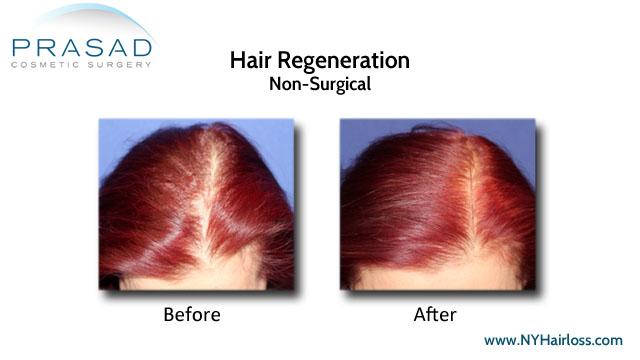Minoxidil appears to work by affecting the length of the hair growth cycle. The hair growth cycle is comprised of specific stages: the anagen, catagen and telogen phases. The anagen phase is the active growing phase; the catagen phase is the resting phase when the hair is present but is not actively growing; and the telogen phase is when the hair sheds. During the telogen phase, there is a usually a 3-4 month time period before hair growth resumes.
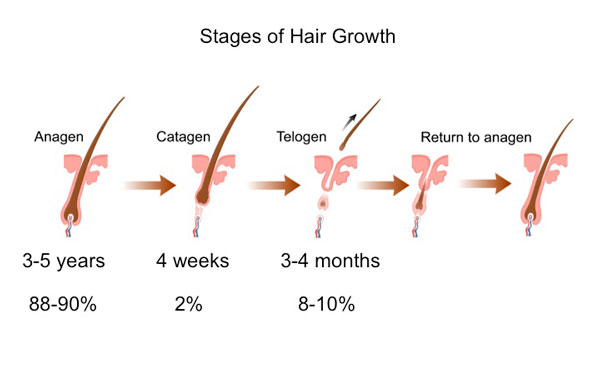
When your hair is thinning or you’re experiencing hair loss, the length of time in the anagen phase decreases, and time in the telogen phase increases. This means you are losing hair faster than the rate of regrowth. When hair is thinning and the hair does grow back, it often grows back thinner.
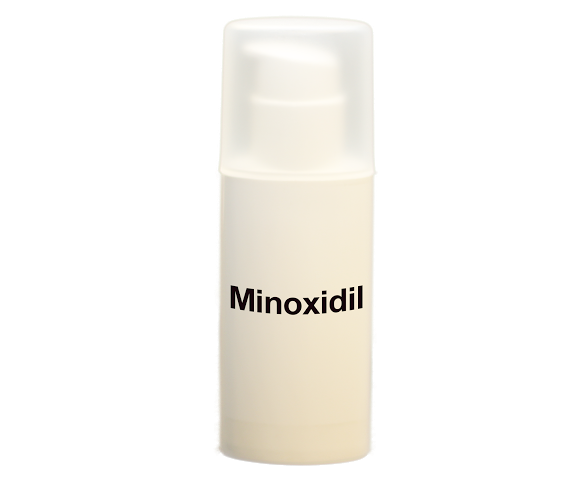
Minoxidil appears to help hair loss by prolonging the active growth period or the anagen phase, which means that the hairs that are progressively thinning grow for a longer period of time, and delays the hair from shedding or entering the telogen phase. This results in the hair remaining on the scalp longer before shedding. This effect of delaying hair shedding, and prolonging hair growth improves scalp coverage. Minoxidil does not block dihydrotestosterone or DHT which is often an important variable contributing to hair thinning in men who are sensitive to DHT. The benefits of minoxidil on the hair growth and shedding cycle decreases as hair loss continues.
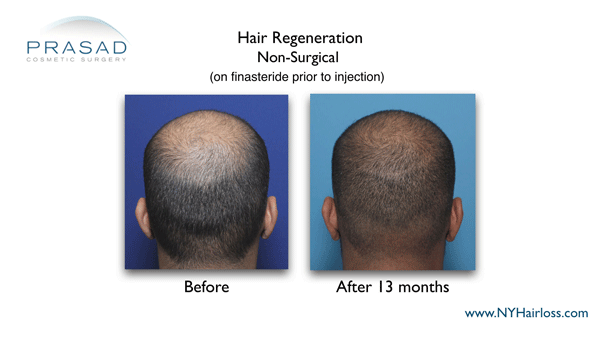
In our practice, we treat hair loss with a treatment system I developed, called TrichoStem Hair Regeneration. TrichoStem Hair Regeneration is a customized system I created by treating hundreds of patients from around the world with male and female pattern hair loss. I create customized treatment plans combining PRP (platelet rich plasma) with acellular matrix produced by ACell. Many of our patients who were previously using minoxidil are weaned off to avoid short term hair shedding. Since the first treatments performed in 2011, the benefits of TrichoStem Hair Regeneration have been sustained for 3-5 years with only 1 treatment session. Some patients with more advanced hair loss have a second treatment at 15-24 months. This second treatment which we refer to as “the booster” has been effective in thickening a large number of the thin hairs which were not visible and were reactivated by the first treatment
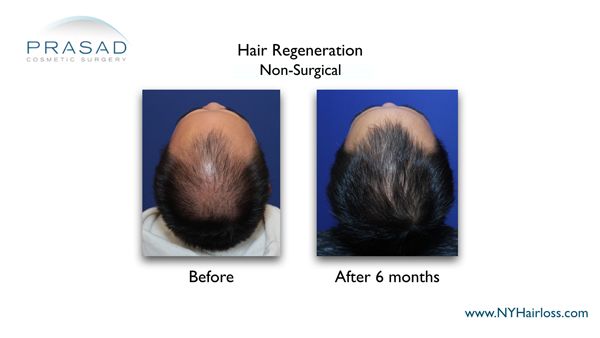
During hair transplant surgery, hair is harvested from the genetically resistant zone or donor area. Typically, a certain percentage of hair grafts don’t grow. In addition, in an FUE (follicular unit extraction) procedure, there’s a loss involved due to transection which occurs when the graft is harvested but the root is left behind. In FUE surgery, approximately 30% of hairs become transected, which means that those hairs don’t have a root and cannot grow.
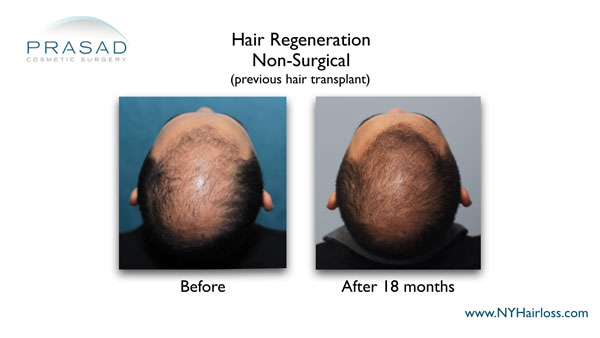
Minoxidil can provide some benefit in helping men and women experiencing hair thinning. For men, finasteride is more effective as it decreases DHT (dihydrotestosterone) which allows more effective prolongation of the hair growth cycle. Finasteride is not generally effective for women with hair loss. TrichoStem Hair Regeneration treatment has been effective for both men and women with hair loss.
